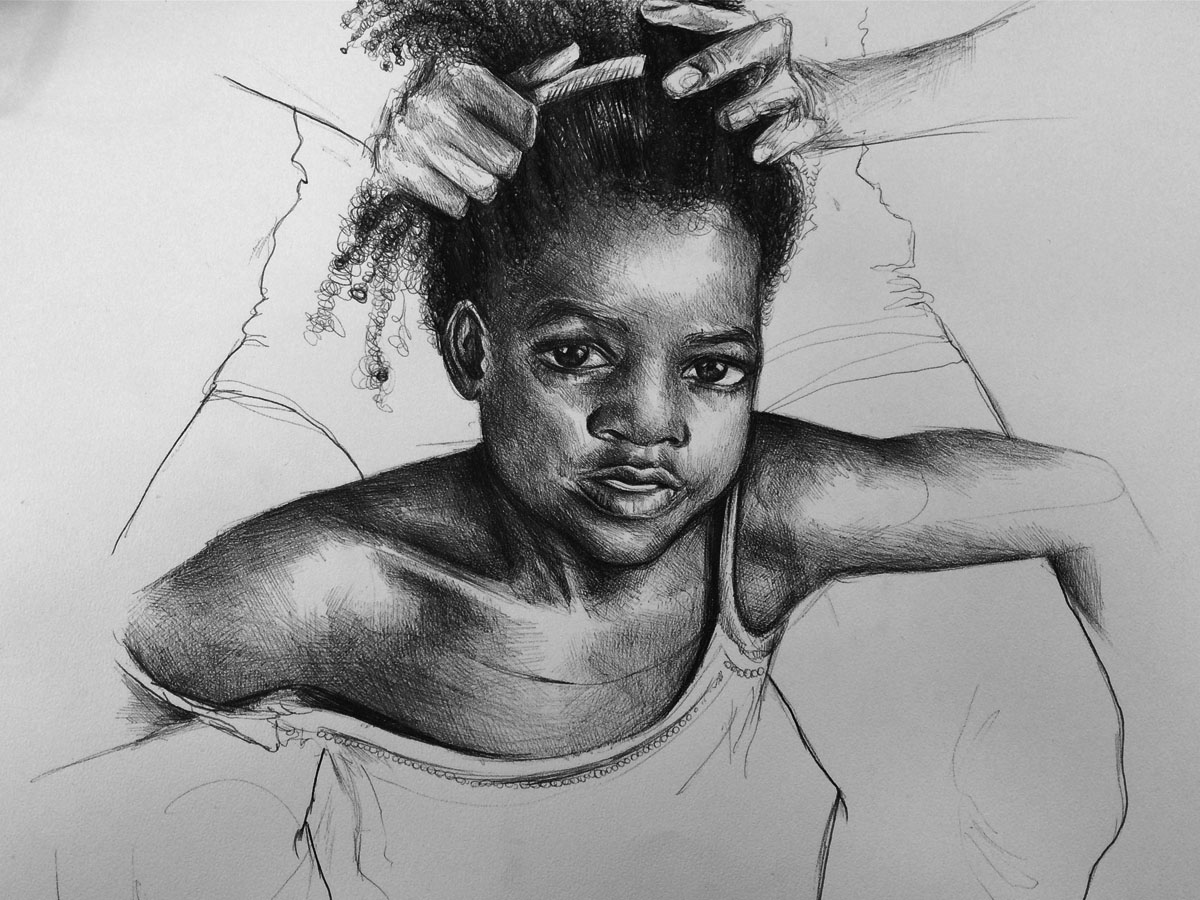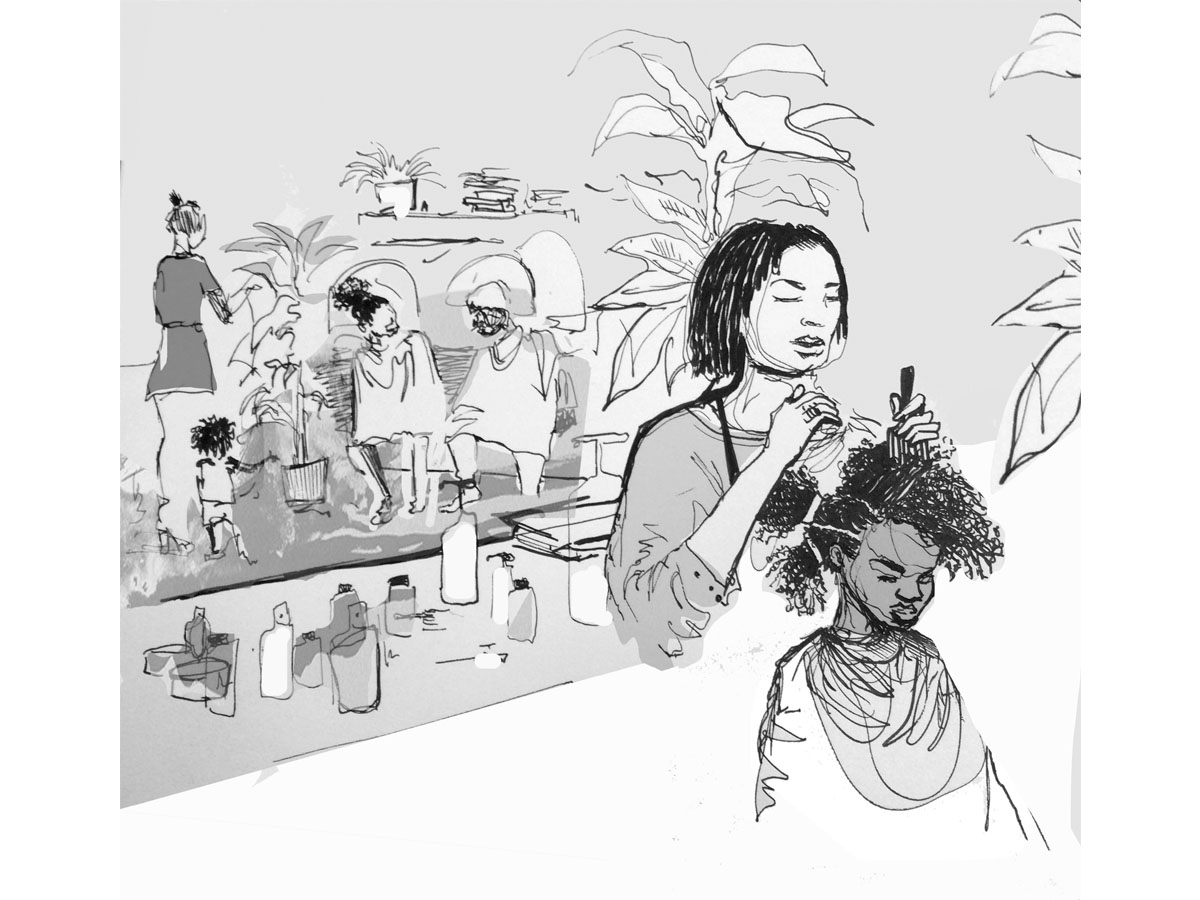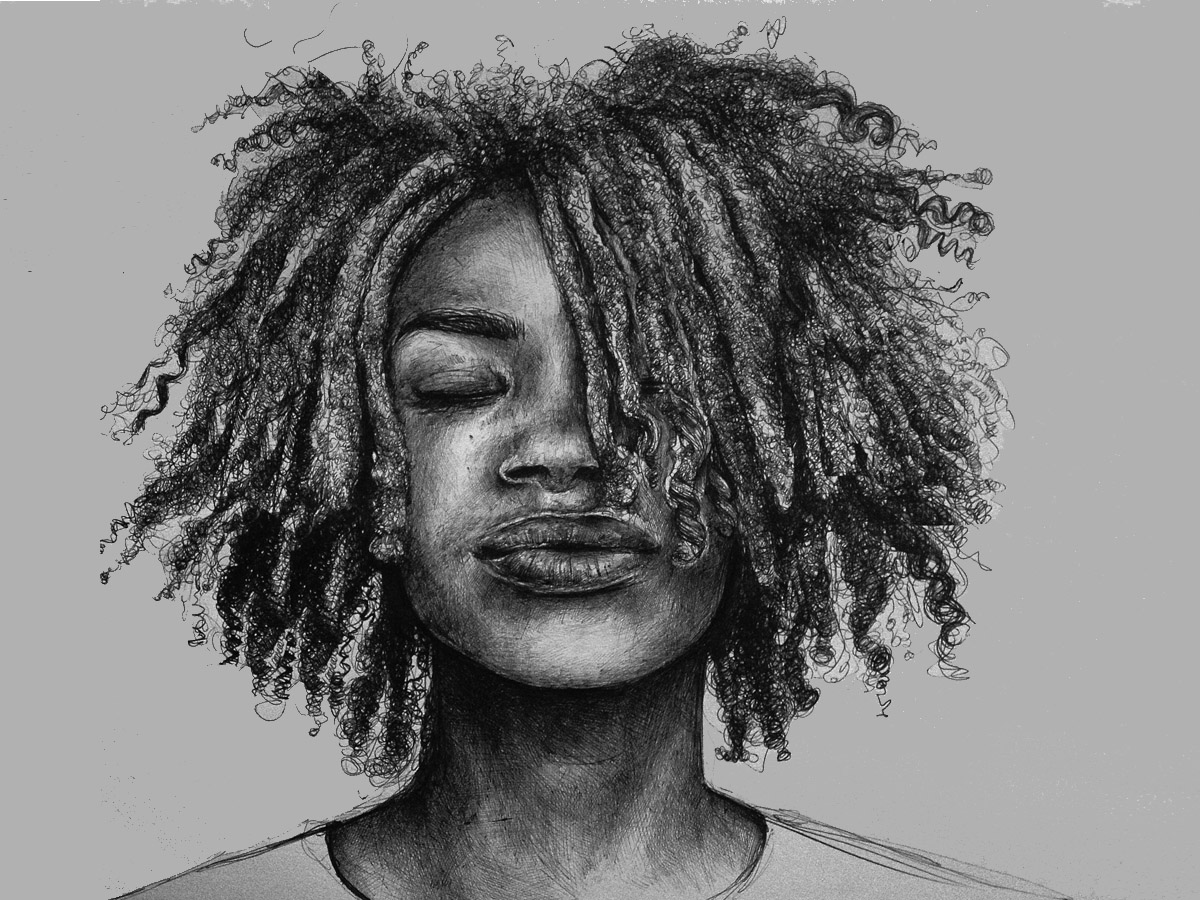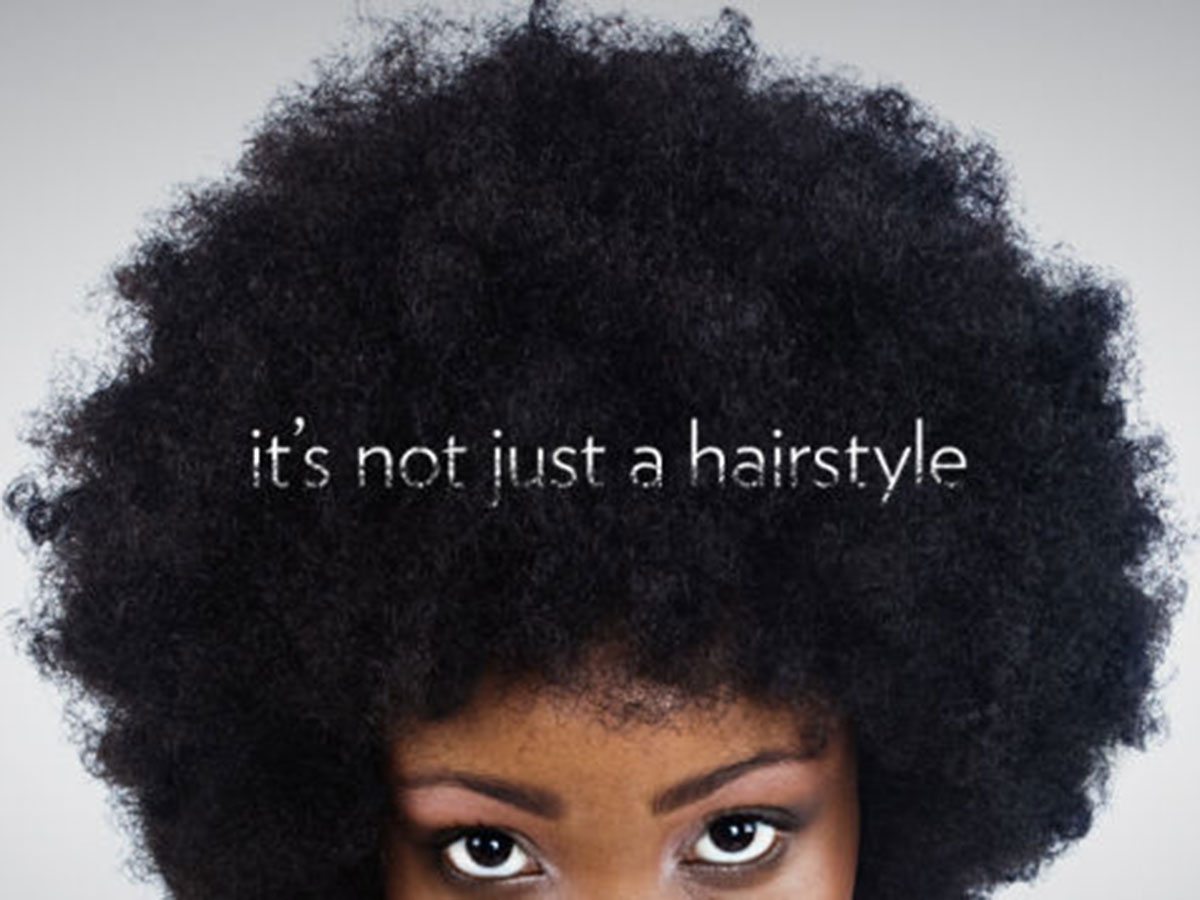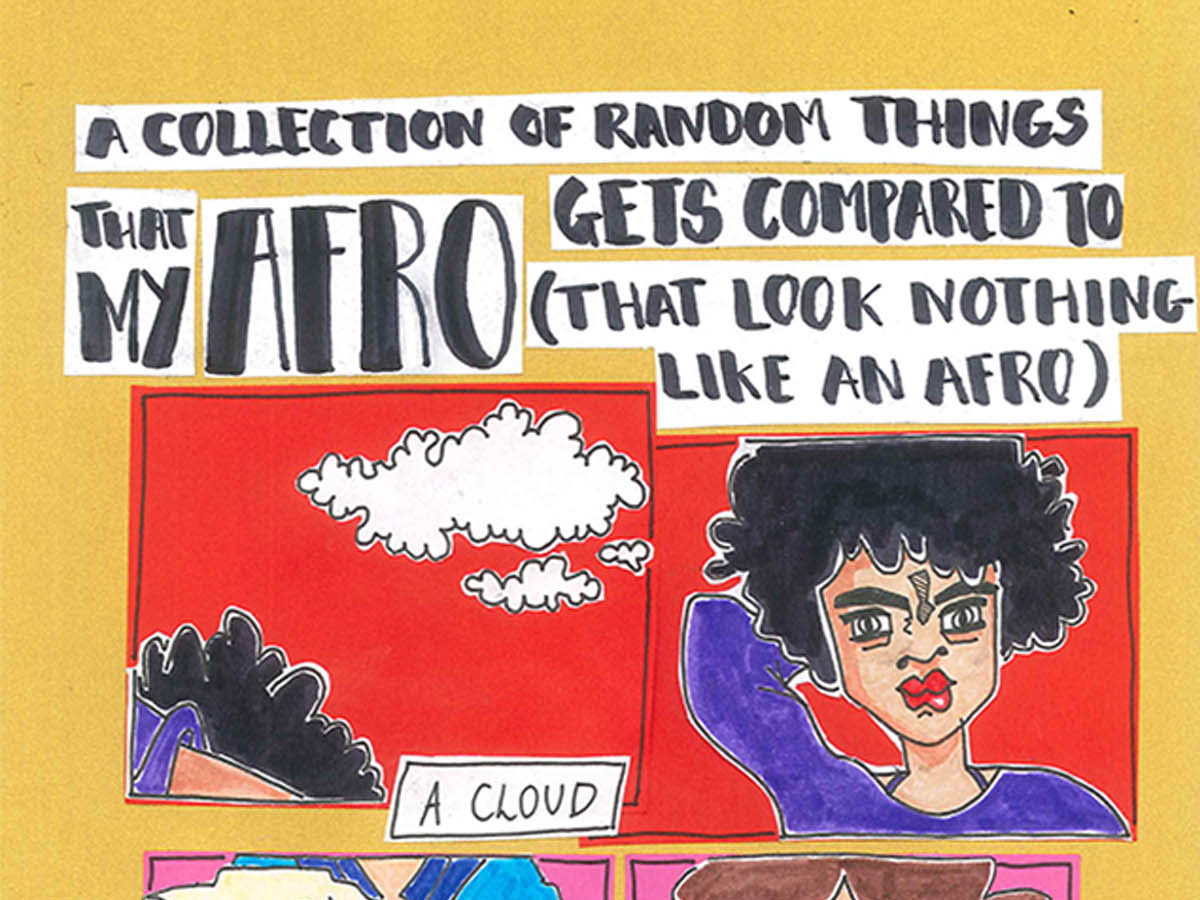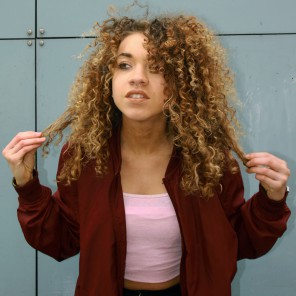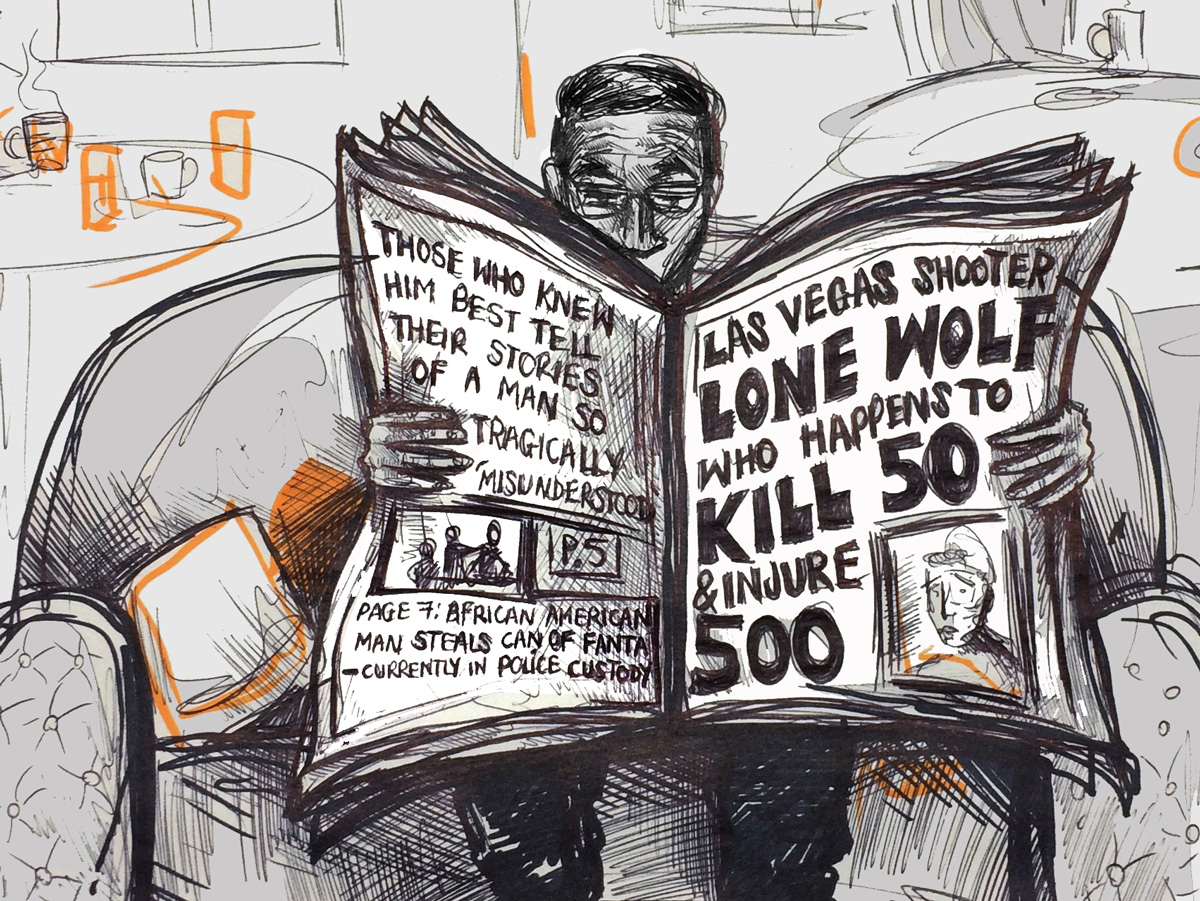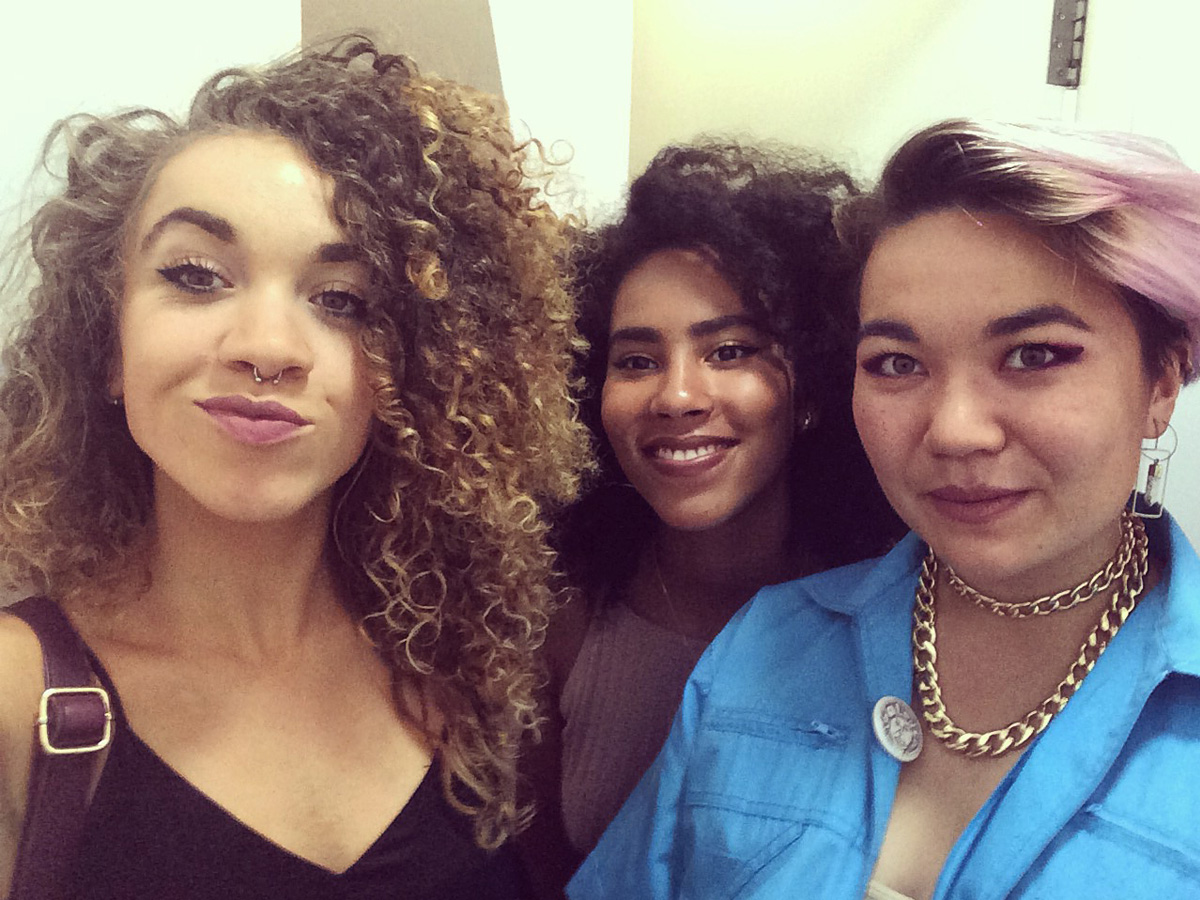From Curls to Coils [Part 2]: A Hairdresser’s Take
Jasmine chats with a hairdresser on acceptance and conformity, representation, and the natural hair movement.
I used to struggle a lot with my hair.
I used to struggle a lot with my hair.
And when I hit high school it all kicked in. For years I had thick, blonde hair that lacked any strong curl pattern and suddenly I was struggling with an untameable mane, waist length and totally alien to me. My friends all had sleek soft hair, immaculate fringes and could style it any way they wanted. At weekends I would go with them to Fly Girls, the extension store in town and writhe with envy as I watched them transform into Angelina Jolie. The shelf for black hair occupied inches of the store and consisted of Dax Super-Hold and chemical relaxers. I am mixed race, and my hair is of mixed textures. It is coarse, dry, and difficult at the crown, whilst loose and softer underneath. My hair didn’t fit in- and other people seemed to think so too. Once a male classmate cut out a chunk of my hair at a party. Generally, the experience was… uncomfortable. I was fed up of people telling me John Freida was the answer to my problems. I grew tired of jibes from older girls about how ‘matted it was at the back’ and of people asking how I got it so curly. So eventually, I took scissors to my roots and I cut my curls out.
My relationship now with my hair is vastly different. It took a long time to get here but it’s something I learnt to embrace, and I see it as a big part of my identity. Now I only ever wear it loose- because for most of my teens that was something I was too afraid to do. After cutting half my hair out aged fourteen and finally achieving that ‘flat’ look I wanted, my efforts are now put into thickening it. I think part of the problem was not seeing anybody that looked like me, which now I realise was what I needed.
We all have different textures and different experiences, and I wanted to explore how both our environment and our peers affect our perceptions of hair, what’s ‘acceptable’, and how this influences how we choose to wear it. I caught up with Remmel, a young woman and hairdresser in Bristol, as she spared me some time to discuss some of these issues.
I always was the person that was plaiting and doing everyone’s hair.
I’m invited to the office, we sip our coffees and try to hear each other the sound of the rattling fan on the desk in front of us. She strikes me as confident and relaxed, and is keeping a buzzer close at hand. As it’s clear she may be summoned to a cut and colour emergency at any point, I start to get under what motivated her to work in this profession.
J: Was there any point that made you want to become a hairdresser?
R: I think for me, I always was the person that was plaiting and doing everyone’s hair. It was just something I was good at and it was always just enjoyment. I guess growing up around a lot of women you do braid and plait a lot of peoples hair, and that’s what you done on a Sunday. That’s how it was- you wash and get your hair done. I guess it just falls down to ‘oh yes you can do it now’.
J: Why do you feel it is important women have freedom and choice to wear their hair how they want to?
My son is mixed race and people tend to touch his hair.
R: I think afro hair is a funny thing, because we spend years straightening our hair to look more westernised, and now with this natural movement I have clients that come in and have read blogs and researched, and just want to go natural. We shouldn’t try and fit into society. We should be our own person. The upsetting thing is when people say to you that your hair looks ‘messy’ and ‘untamed’, often you then conform to that and smooth it. It’s crazy that in 2016 we still have all of this. I think personally if some people wear it- for instance when Kim Kardashian gets braids and other people start wearing that, it’s seen as acceptable. But it’s something as a young black person we’ve been doing since we were little, having our hair braided in those styles. But with us, it’s seen as untamed. Unkept. Now it’s trendy. You’ve got the freedom to be how you want to be, and we live in a country where you can do what you want and I don’t think you should be judged.
J: Have you noticed an increase in people wanting natural hair?
R: Oh god, yes. It’s mad. The natural hair movement is crazy. Loads of people coming in now who want hair hair shaved off and start afresh, or they want to go from a relaxer to a texturizer, or they want to know how to manage their natural curls. The movement is crazy, but it is good. I did think about going natural, but it takes time to find your funk in it. You can make it look amazing.
J: My mum didn’t let me straighten it.
R: Oh that’s good
J: But I still found ways of getting frustrated with it. I cut loads out. I didn’t want it looking the way it did, I just wanted it flat and smooth.
R: So you just conformed to what you were seeing every day.
My son is mixed race and people tend to touch his hair. He’s got product in it and people are just like… (holds hands out and looking disgusted). We get a lot of mixed kids in the salon, and you hear things like ‘Oh I can’t wait until she’s old enough to straighten it’ and I’m like why would she want to straighten it? It’s seen as if it’s straight; it’s easier. Firstly they‘re a child, if they can’t maintain it now they’re not gonna maintain it with a chemical on it, and secondly actually they’ve got beautiful hair. It’s about embracing what you’ve got, and seeing it as a beauty not a negative.
With relaxing, you have the issue of forgetting what your hair is actually like. Sometime I put mine in braids, and after I have quite a lot of roots. I then look at it and think ‘oh wow that is actually what my hair’s like’. Sometimes it’s nice to be reminded. It changes the way your curls are; it drops them, and takes a long time for them to come back to life.
J: Do you feel like cultural studies should be taught to kids at a younger age? Do you feel like this will change anything?
R: I think it’s just society. Funnily enough have a client in the other day, and she talked about black empowerment. What is being black to you? I think even as someone of colour people try and fit you into society. People see what Lupita did with her hair at the Met Gala (a style paying homage to her African roots) as not fitting in. It’s not a ‘normal’ hair style, it’s too ‘out there’ and they can’t see how it would be a form of art, and that it could relate back to something that isn’t just about a ‘hairdo’. It’s about something she’s trying to represent. If you’re going to write about hair, surely you would do your research? It seems like a really obvious thing. It’s hard isn’t it? It can be interesting how people perceive you with your hair whether it be natural or it be relaxed, and how you fit into society; what is your place and what are you trying to portray? You know what i mean?
If you would like to let us know your thoughts on representation or what hair means to you, get in touch. Find us on twitter at Rifemag or on our website Rife Magazine
Or if you’re struggling with any self-esteem issues or just want a place to socialise and relax, check out Girls Group taking place on the 12th July.

